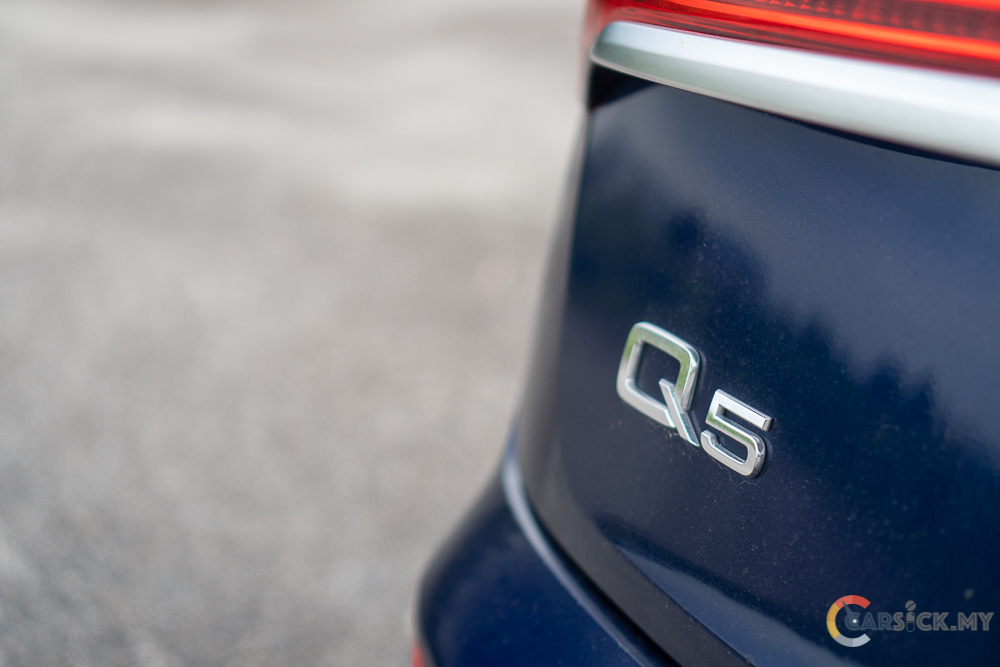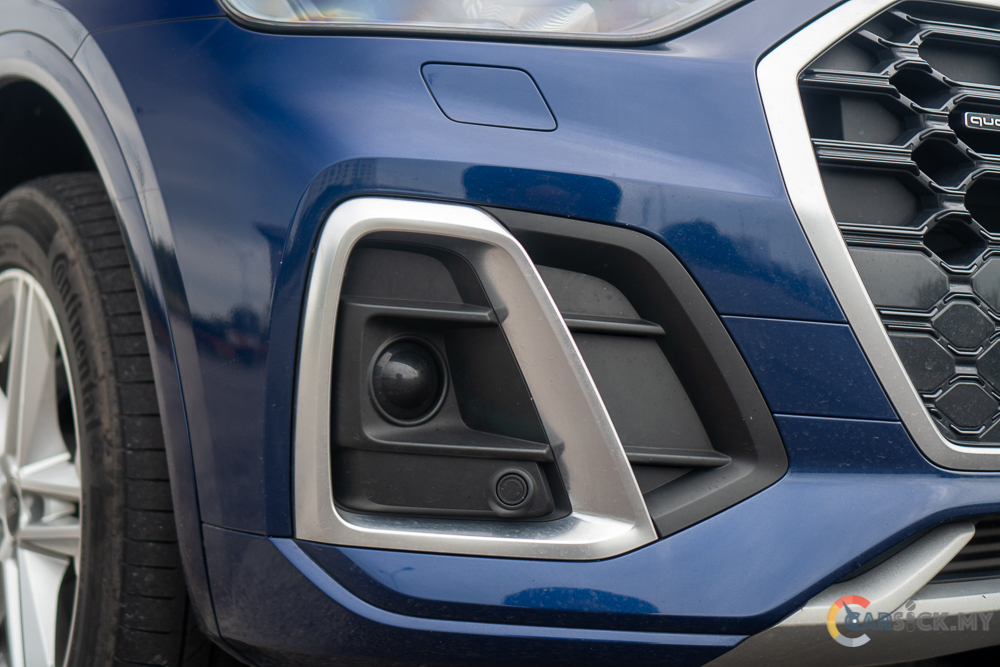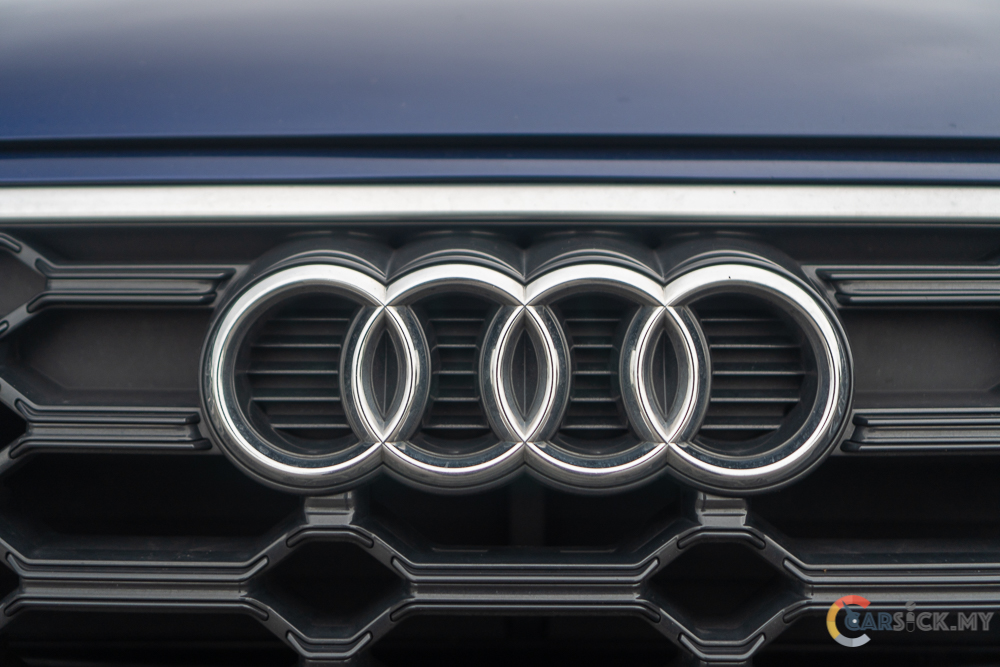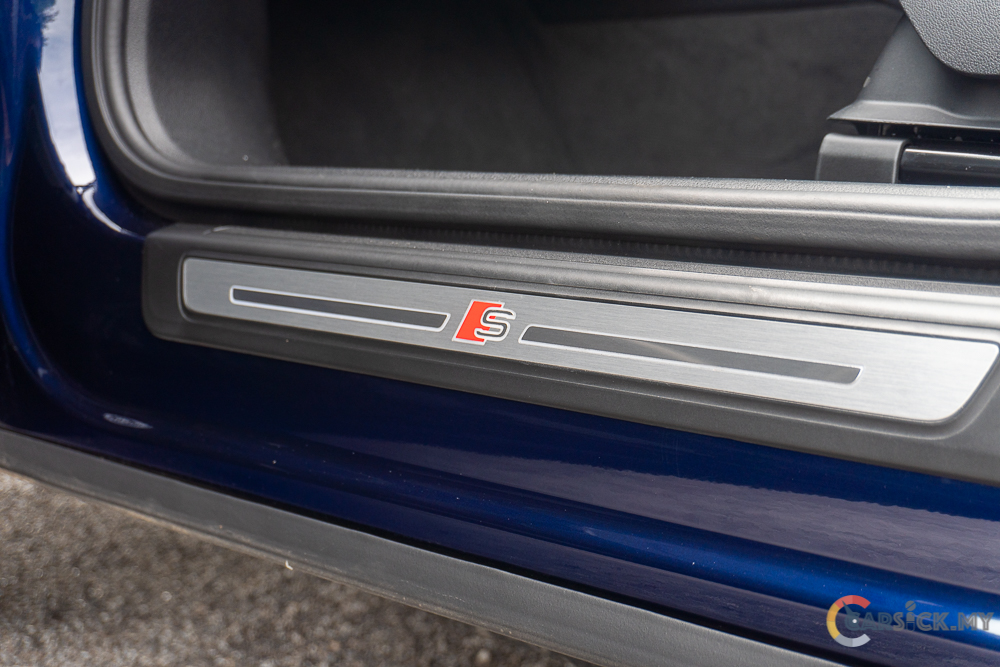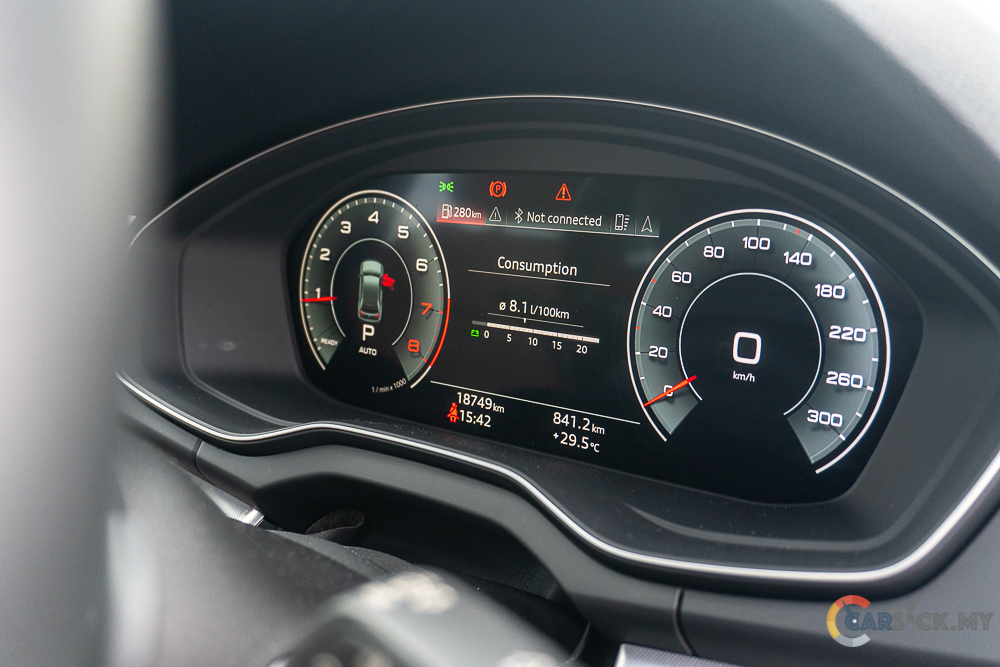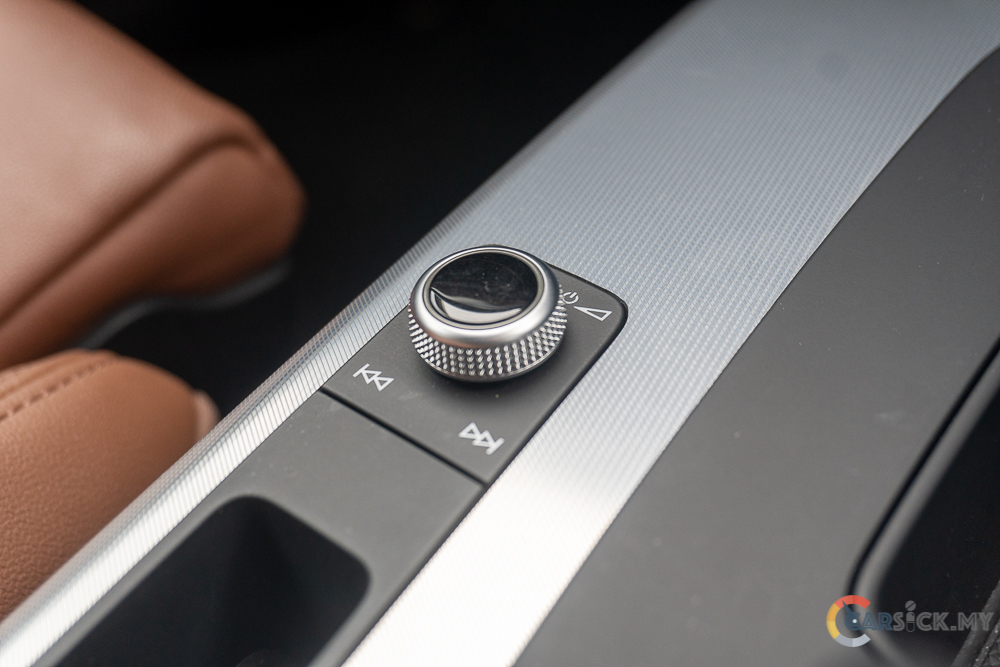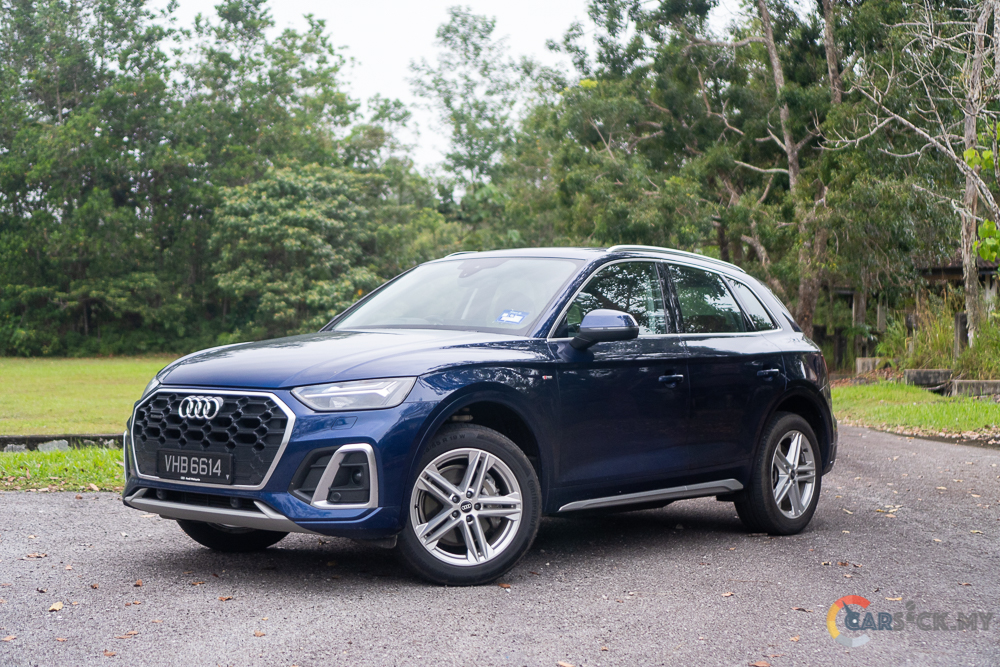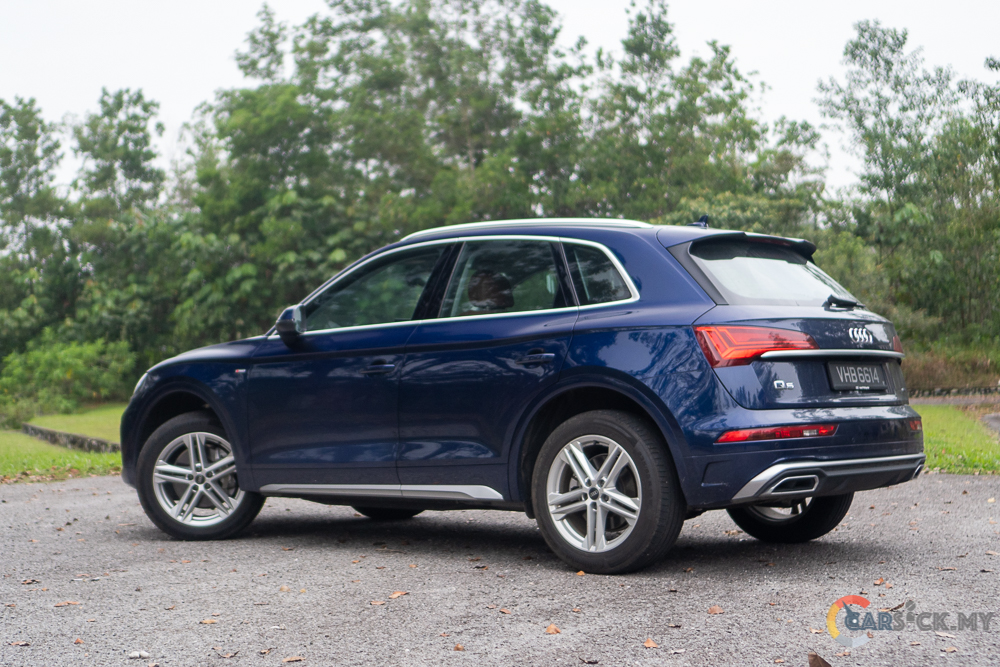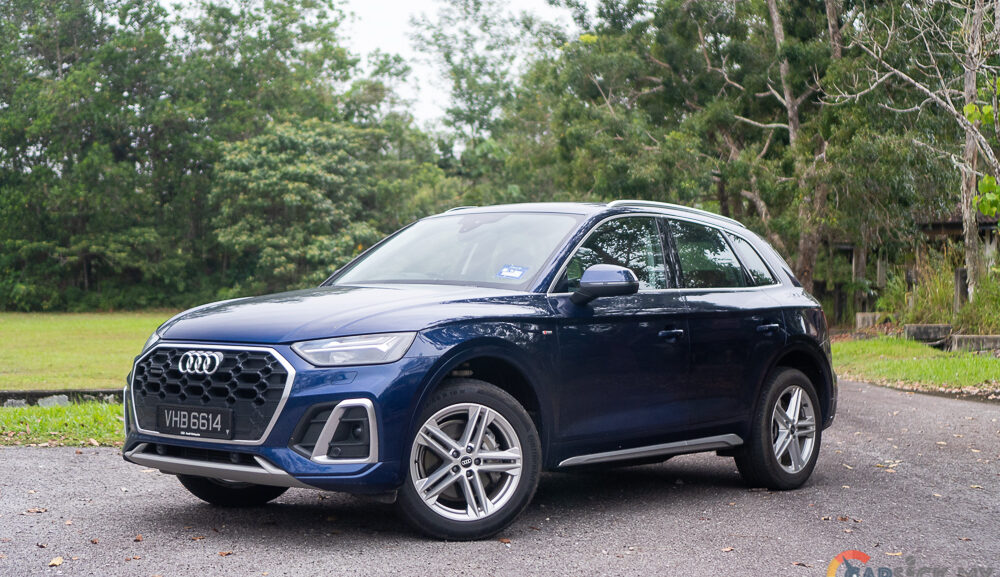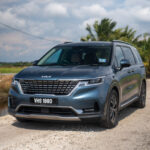PHS has been working tirelessly to reinvigorate the Audi brand in Malaysia ever since they took over the distributorship. Following a positive experience with the Audi Q3, Audi Malaysia granted me the opportunity to test out the larger Audi Q5 SUV. The Audi Q5 was designed to rival popular vehicles such as the Mercedes Benz GLC and BMW X3. In this review, I will examine the Audi Q5 more closely and evaluate whether it has what it takes to compete with its counterparts.
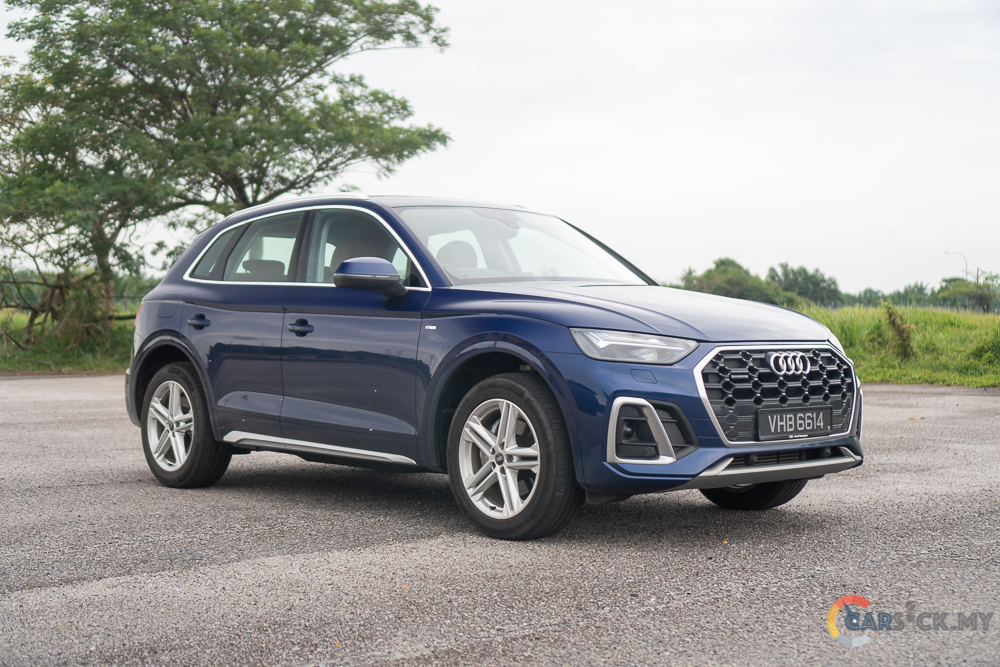
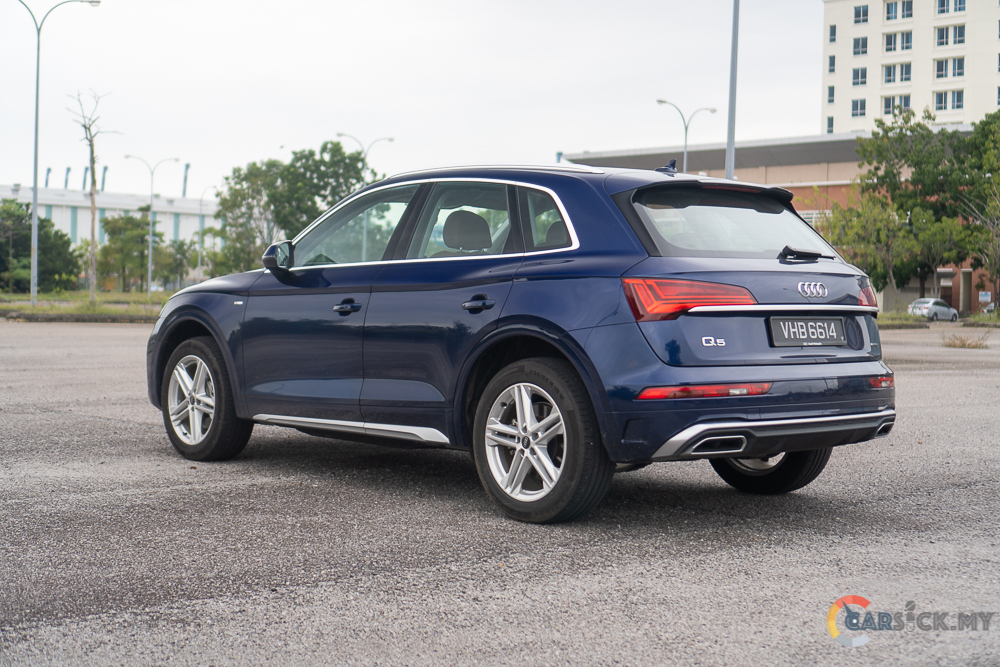 Looking from the outside, the Q5 appears similar to a larger version of the Audi Q3, but in comparison to the GLC and X3, it seems somewhat smaller. Despite the S-line trim upgrade, the Q5’s appearance is unremarkable, allowing it to blend in effortlessly with other vehicles on the road. Chrome strips on the lower part of the SUV provide some contrasting colors. The front of the Q5 features a large grille flanked by full LED headlights. Although I anticipated adaptive high beam functionality in the vehicle, it was absent from the media unit for reasons unknown to me.
Looking from the outside, the Q5 appears similar to a larger version of the Audi Q3, but in comparison to the GLC and X3, it seems somewhat smaller. Despite the S-line trim upgrade, the Q5’s appearance is unremarkable, allowing it to blend in effortlessly with other vehicles on the road. Chrome strips on the lower part of the SUV provide some contrasting colors. The front of the Q5 features a large grille flanked by full LED headlights. Although I anticipated adaptive high beam functionality in the vehicle, it was absent from the media unit for reasons unknown to me. 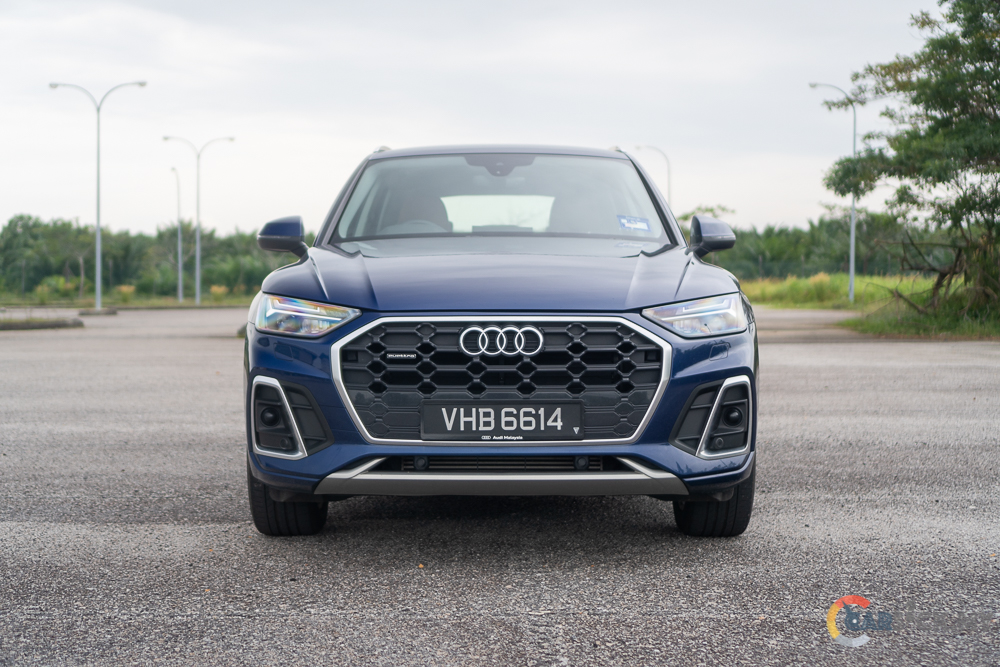
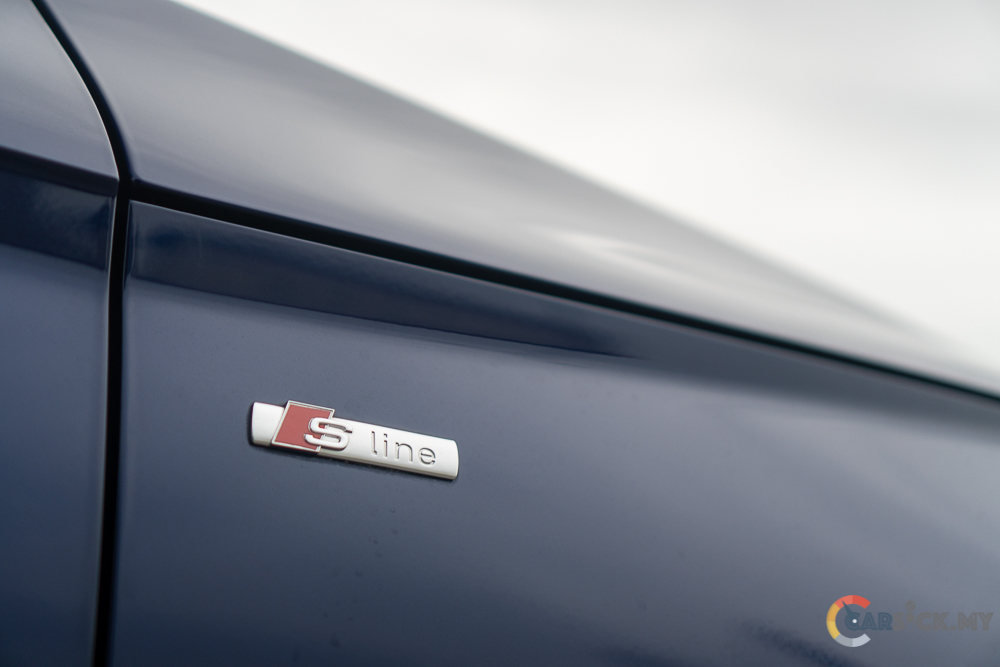
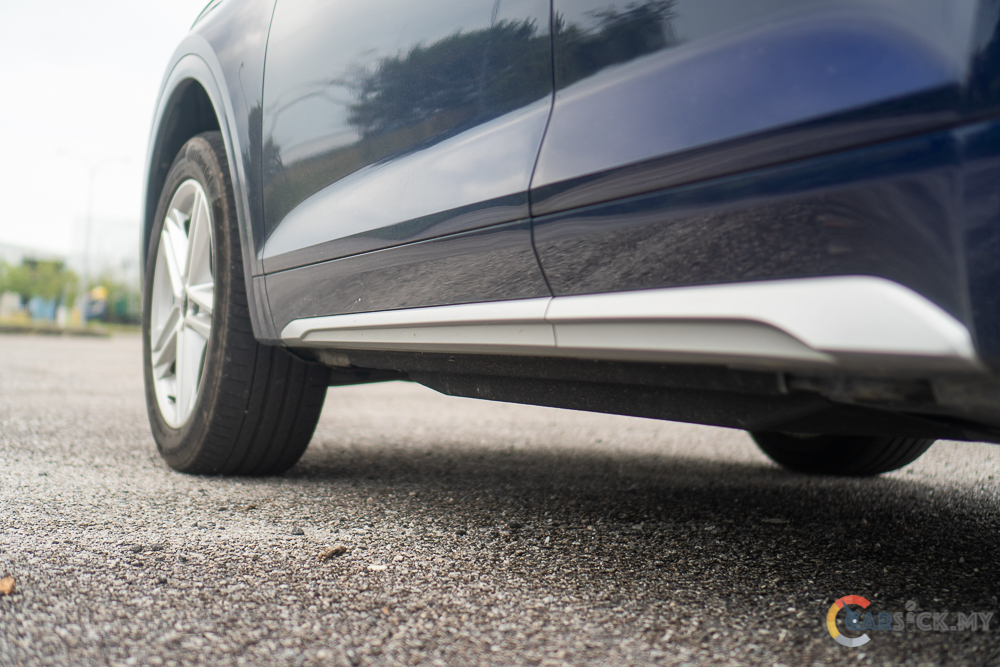
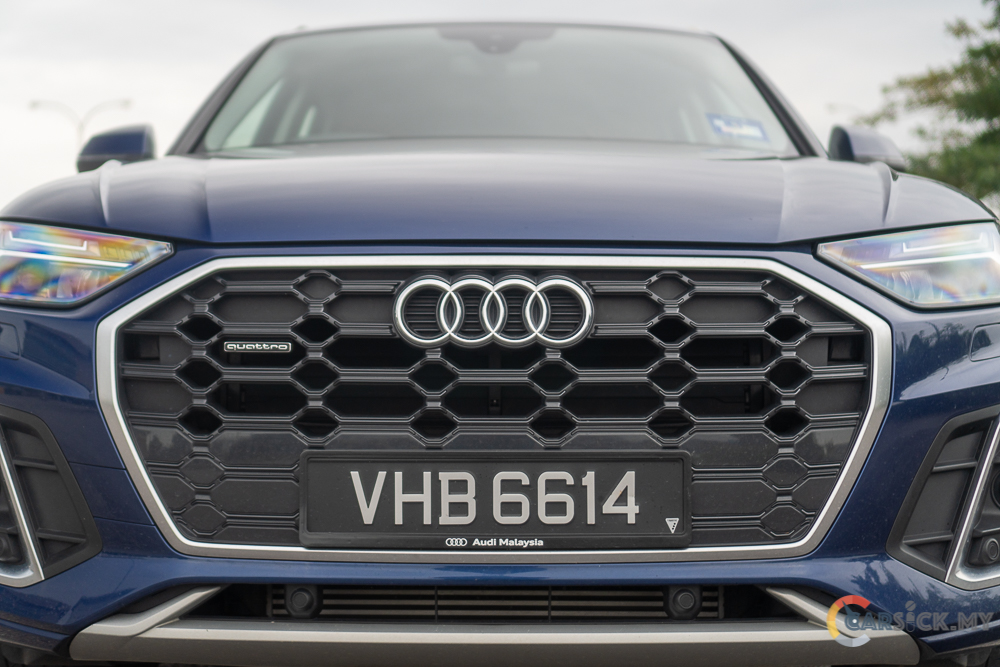
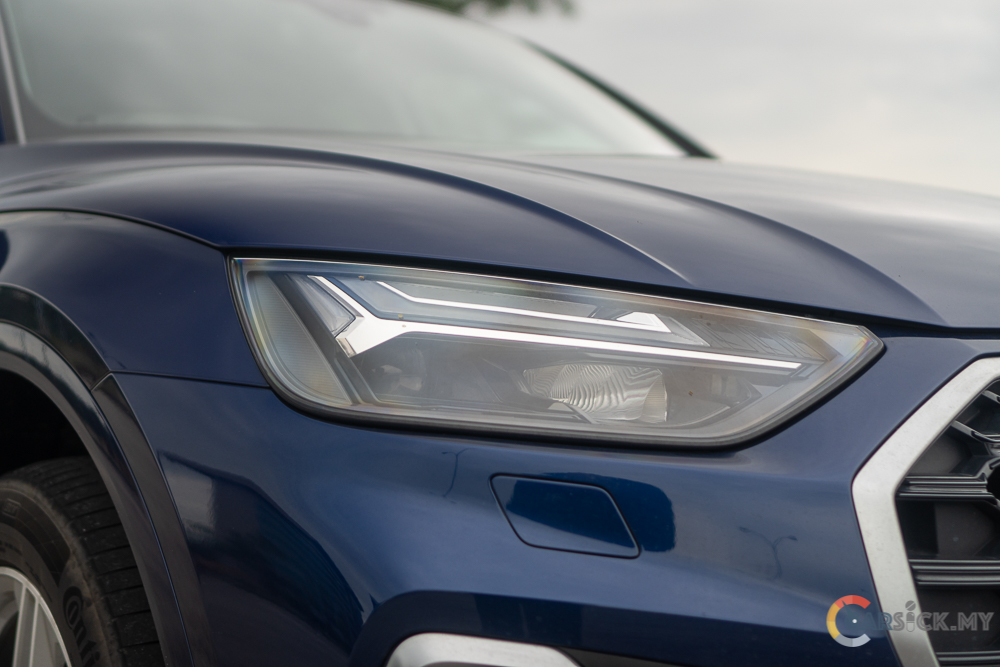
At the back, the Q5 boasts a distinctive feature with full LED tail lights that is attached to the tailgate. Opening the tailgate causes the tail lights to shift away together, exposing the generous boot space. Despite this unique feature, the Q5’s appearance could benefit from more impressive rims. The included 19-inch rims look plain, and Audi has certainly produced better looking options. These rims are equipped with 235/55 R19 tires, providing the necessary ride comfort for passengers. 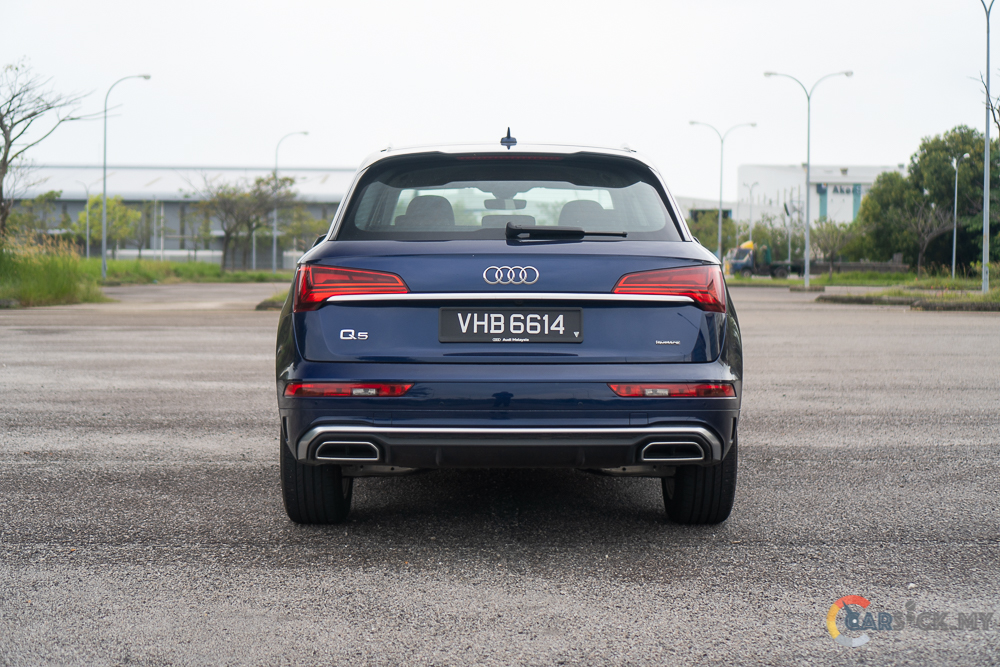
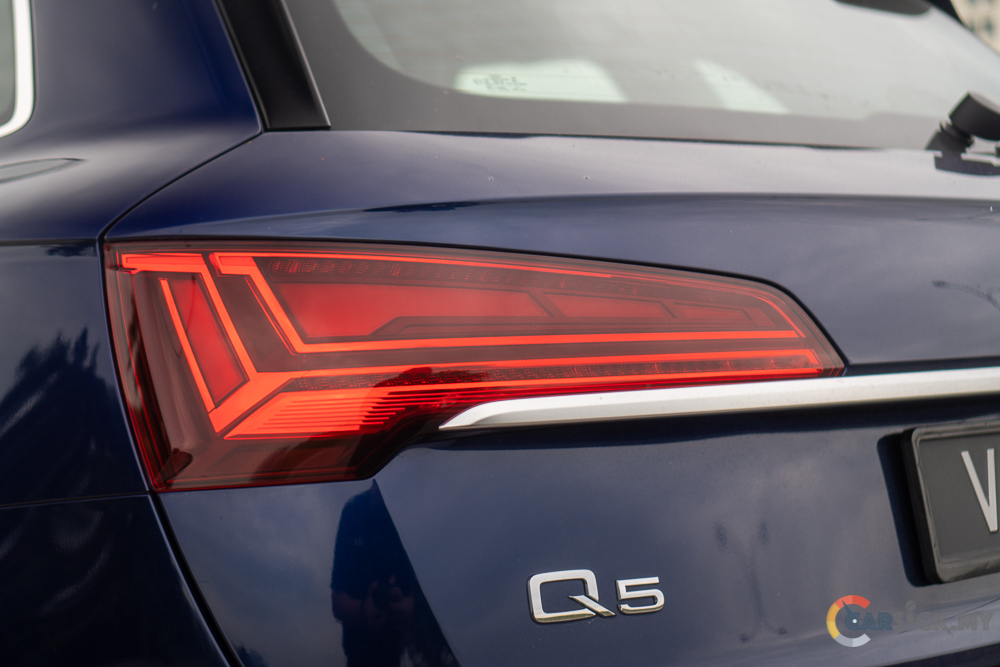
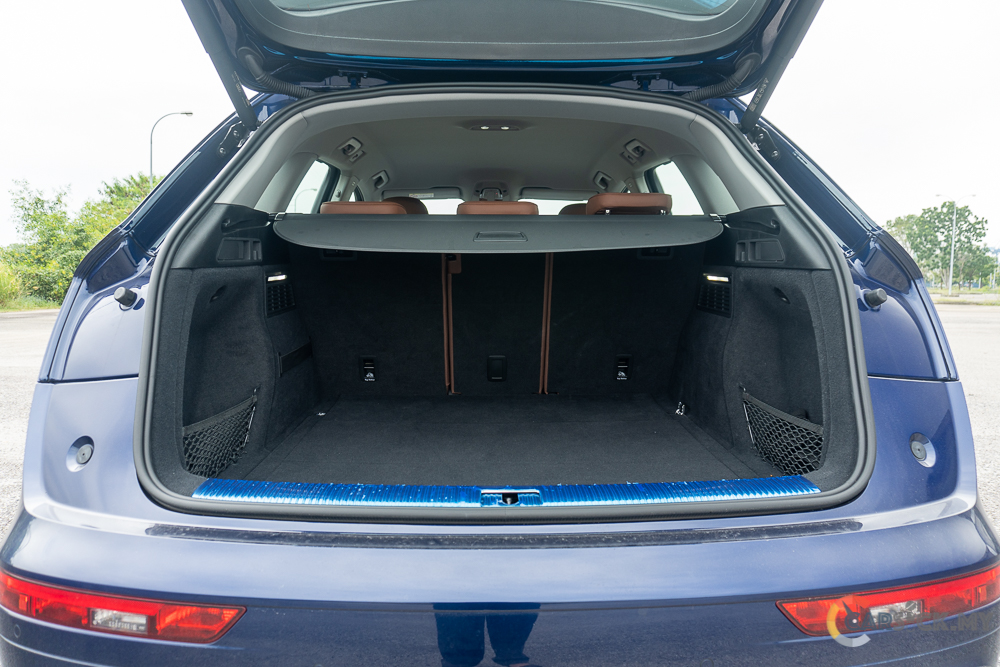
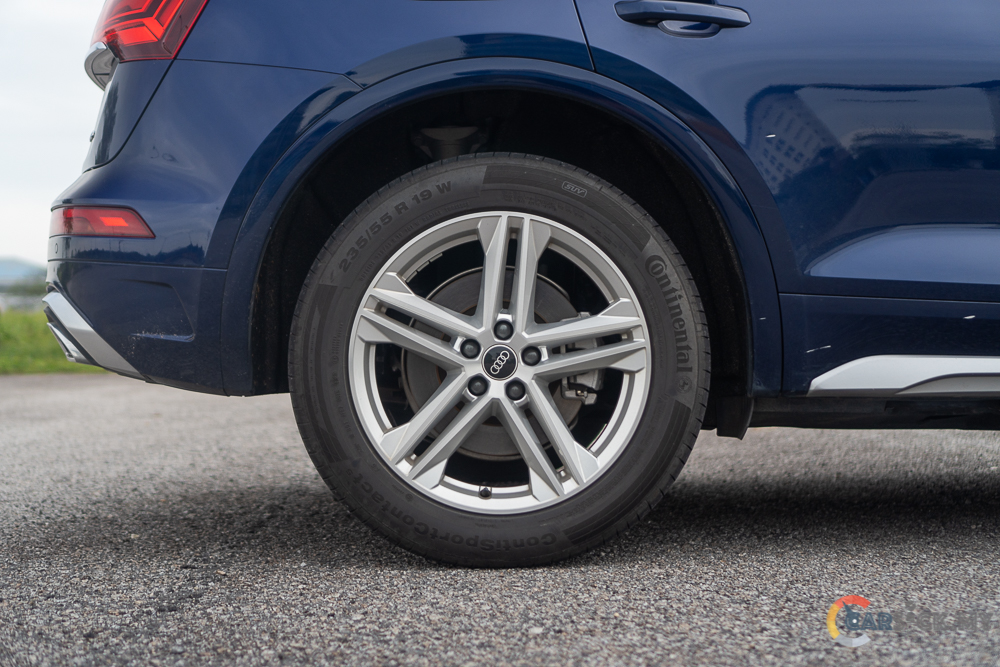
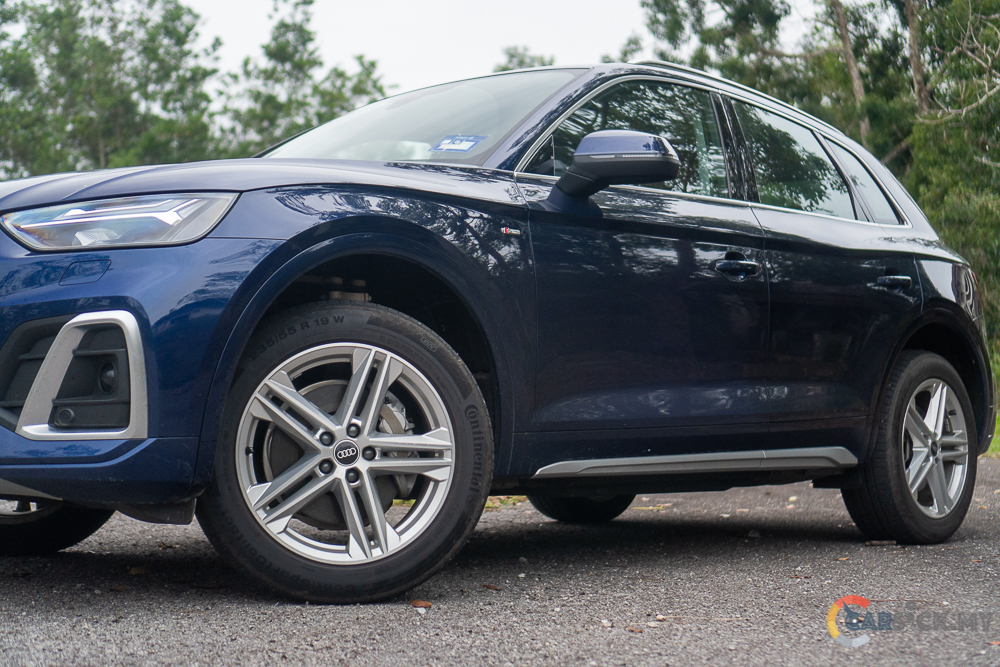
Upon boarding, you’ll immediately recognize the typical Audi interior, which exudes a sense of quality craftsmanship. The buttons and toggles have a satisfying tactile feel when pressed. Compared to the Q3, the interior of the Q5 is noticeably more spartan, lacking even ambient lighting. However, it’s worth noting that according to Audi Malaysia’s website, ambient lighting is an available option. 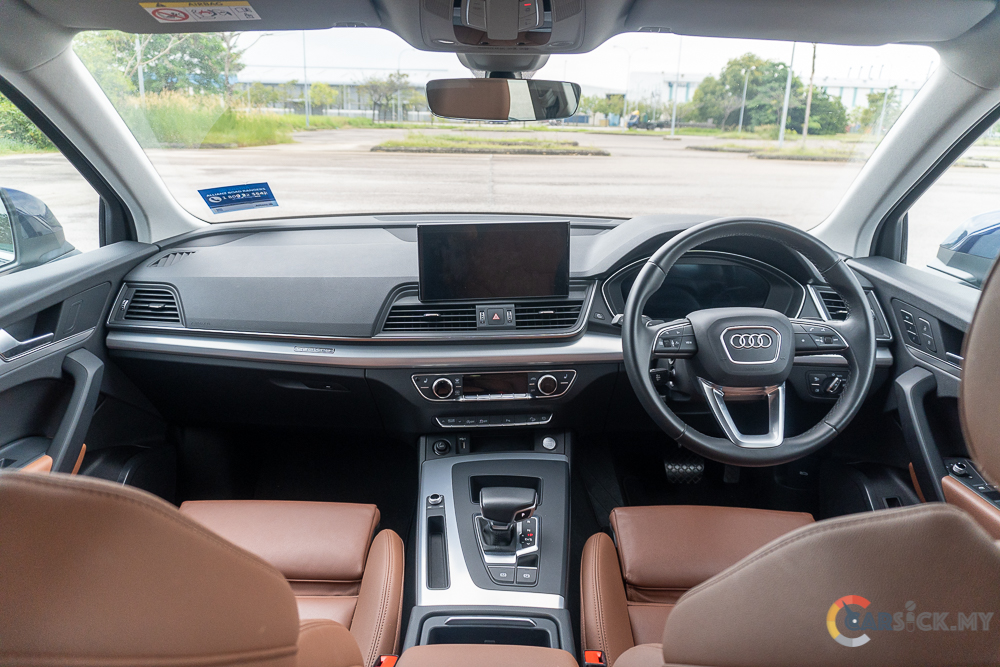
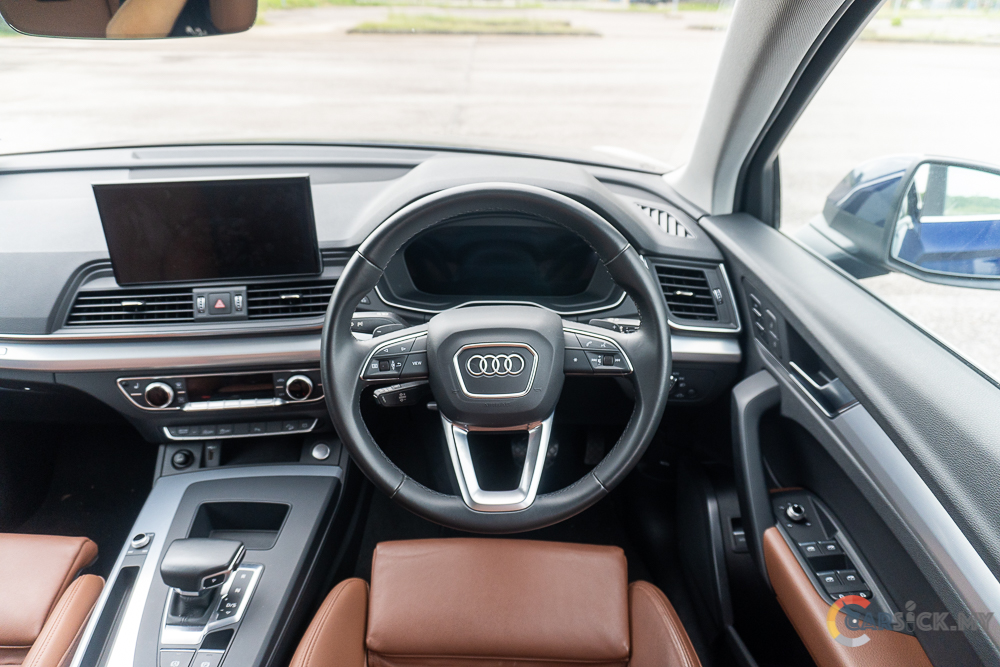
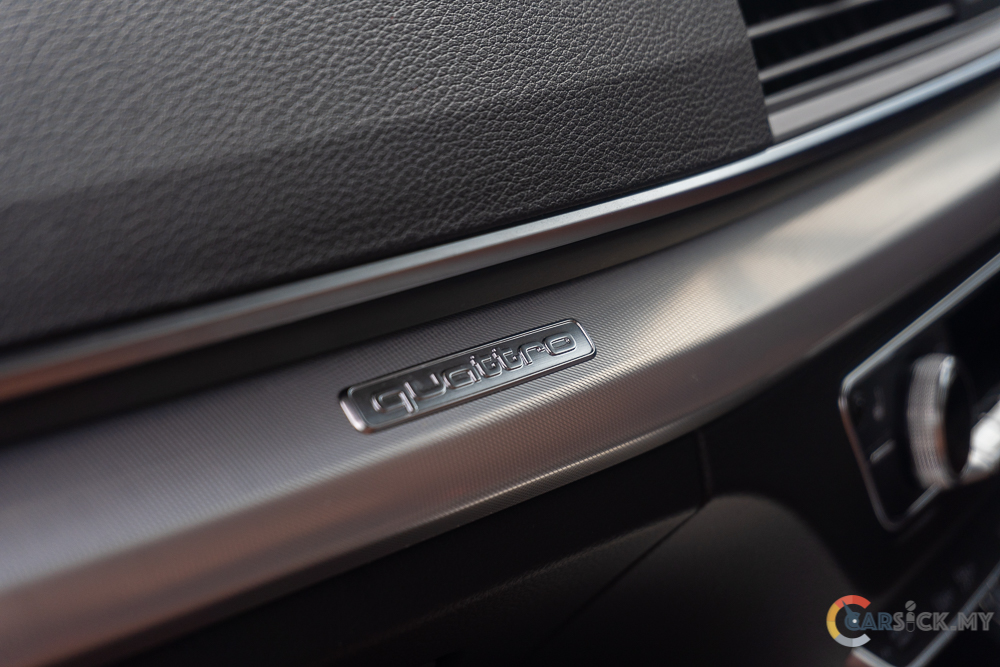
Despite its lack of certain equipment found in the media unit, the vehicle still boasts a digital instrument cluster and a spacious infotainment screen that supports Android Auto and Apple Carplay, although the connection is wired. The Q5 media unit does not include a premium sound system, but I noticed that the standard speakers sound impressively clear and crisp. It is possible that the standard speakers are part of the premium audio system, making it a strong foundation to build upon. 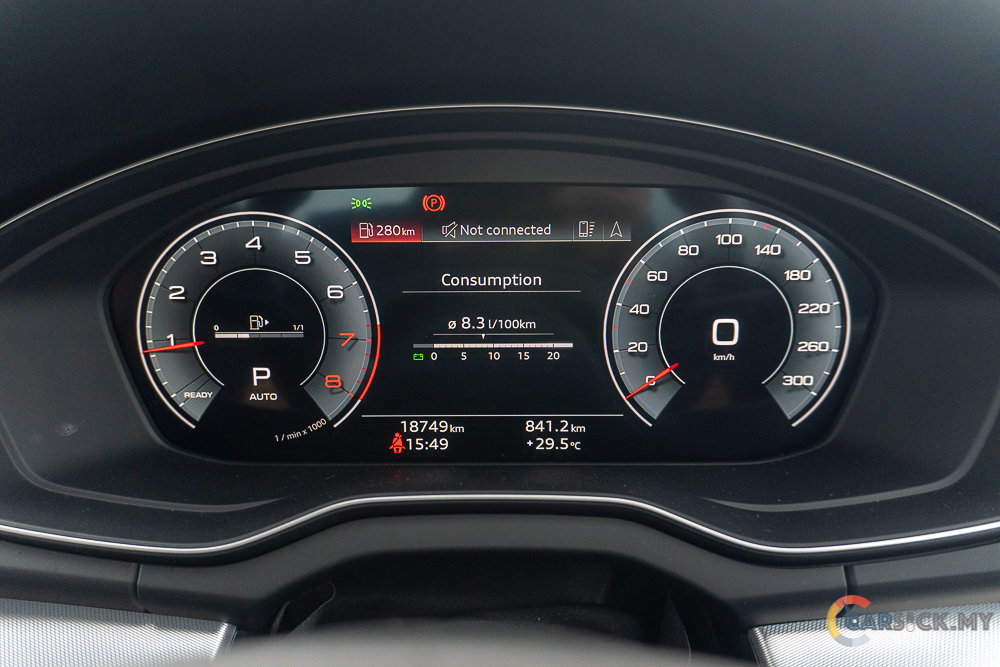
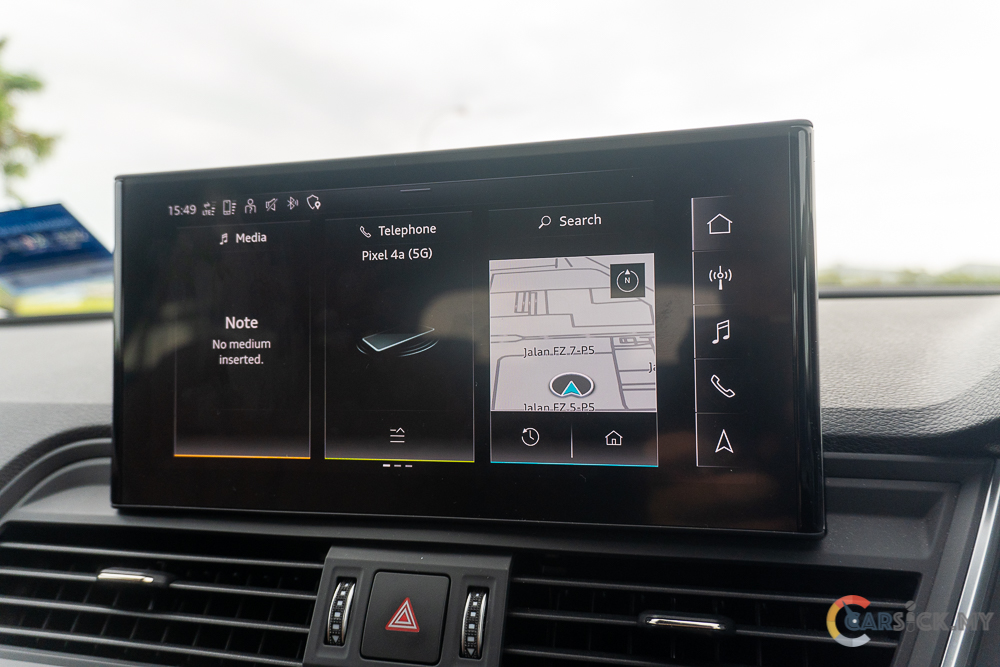
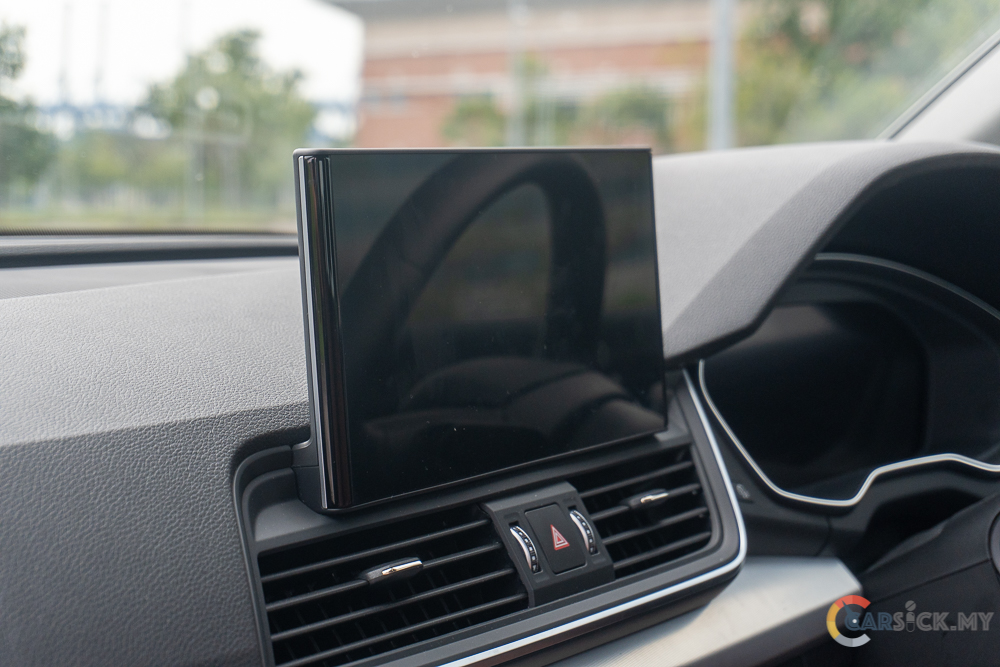
From the driver’s seat, the high position offers a commanding view of the road and traffic, while also providing excellent comfort with an easily adjustable seating position. Shifting gears is a pleasurable experience with a gear lever that gives the impression of controlling an aircraft. Although the rear seats have decent legroom and ample headroom, seating three adults can feel cramped. To mitigate the effects of sunlight, sun shades are provided on both rear doors. Additionally, the 510L boot space can be expanded by folding down the rear seats. 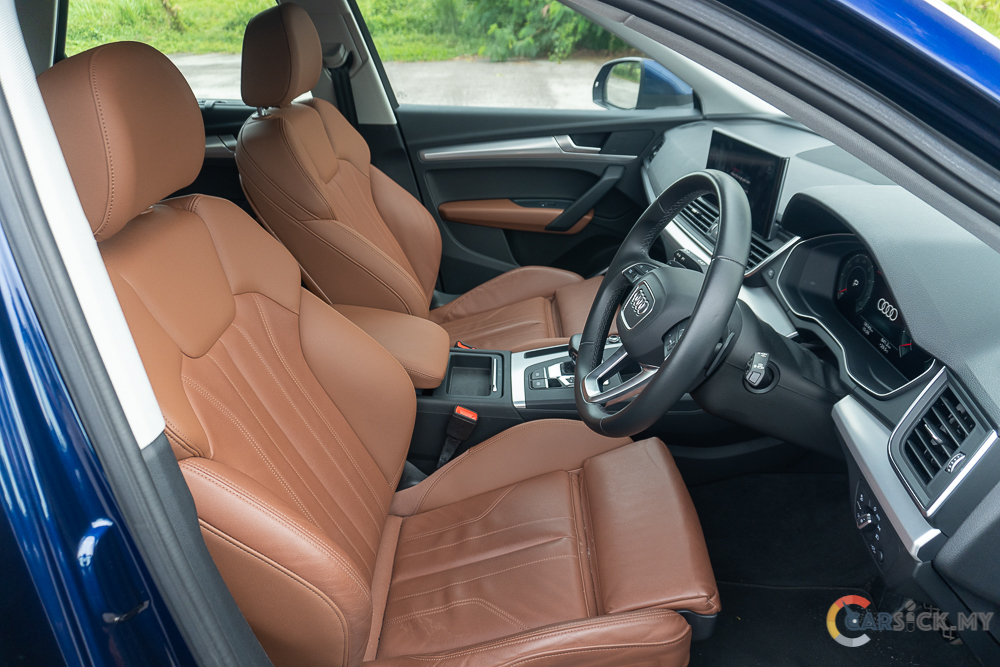
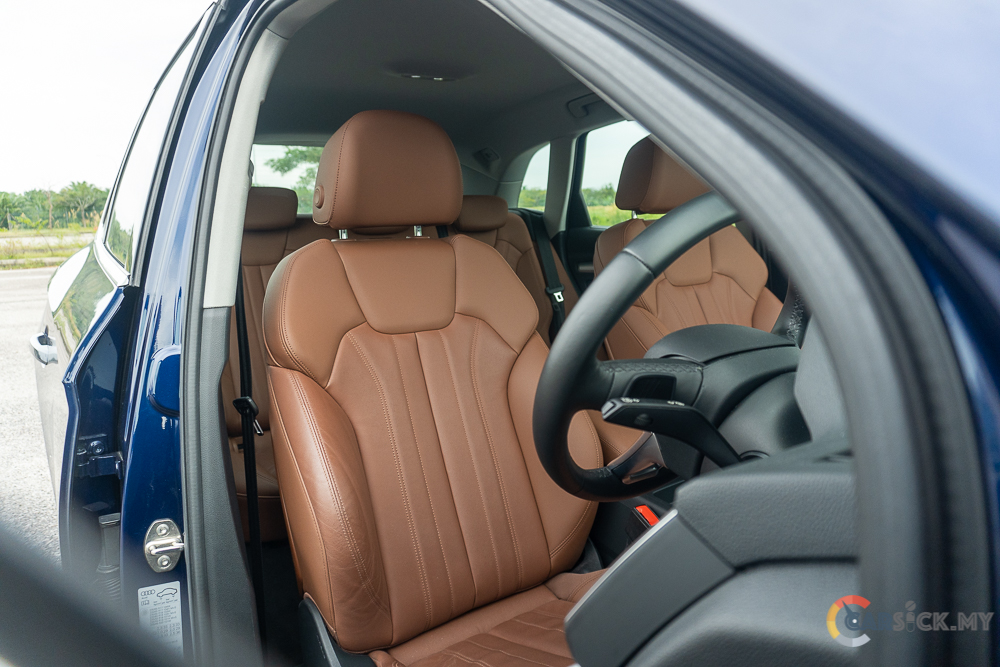
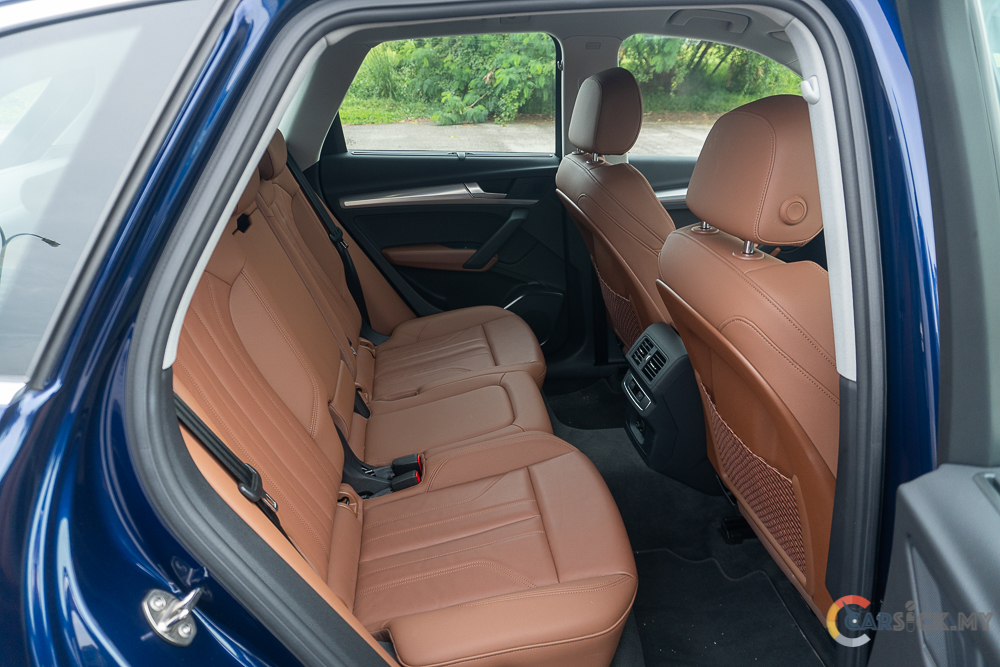
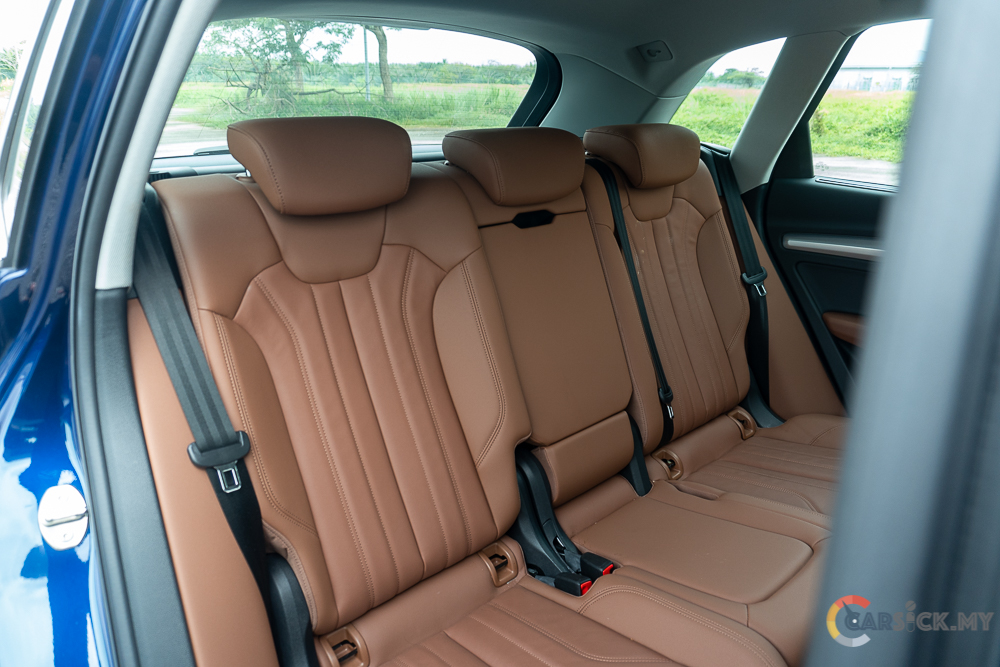
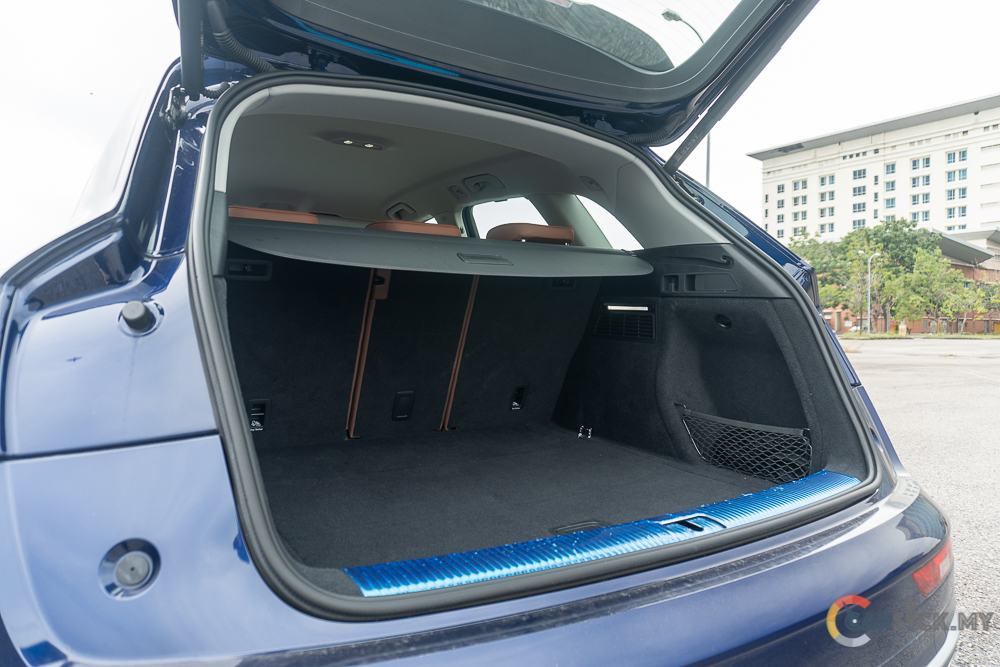
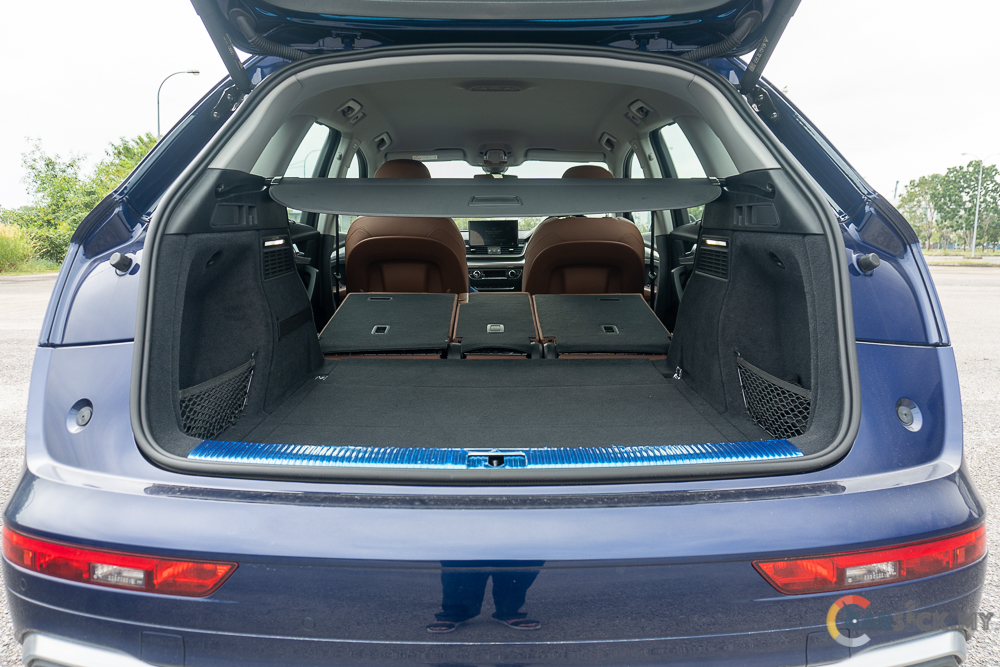
Beneath the surface, the Q5 runs on a 2.0L EA888 turbocharged motor that has been updated with 48V mild hybrid technology. This powertrain is paired with a 7 speed dual clutch transmission and utilizes the Quattro all-wheel-drive system to send power to all four wheels. The result is an impressive set of performance figures: 249 PS of total output achieved at 5,000 – 6,000 rpm, 370 Nm of total torque attained at 1,600 – 4,500 rpm, a 0 to 100 km/h acceleration time of just 6.1 seconds, and a top speed of 240 km/h. 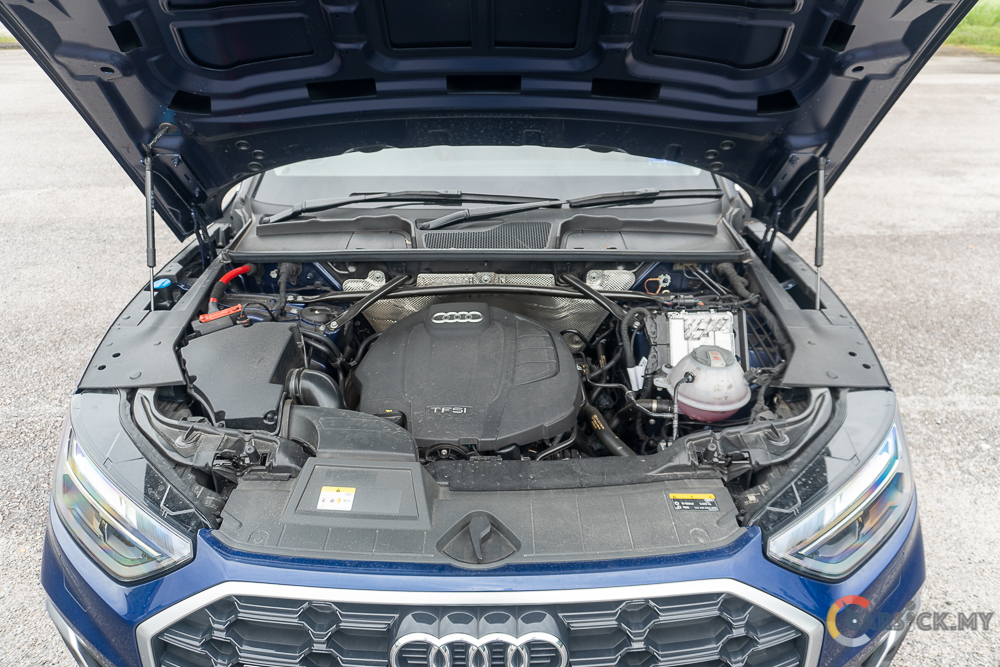
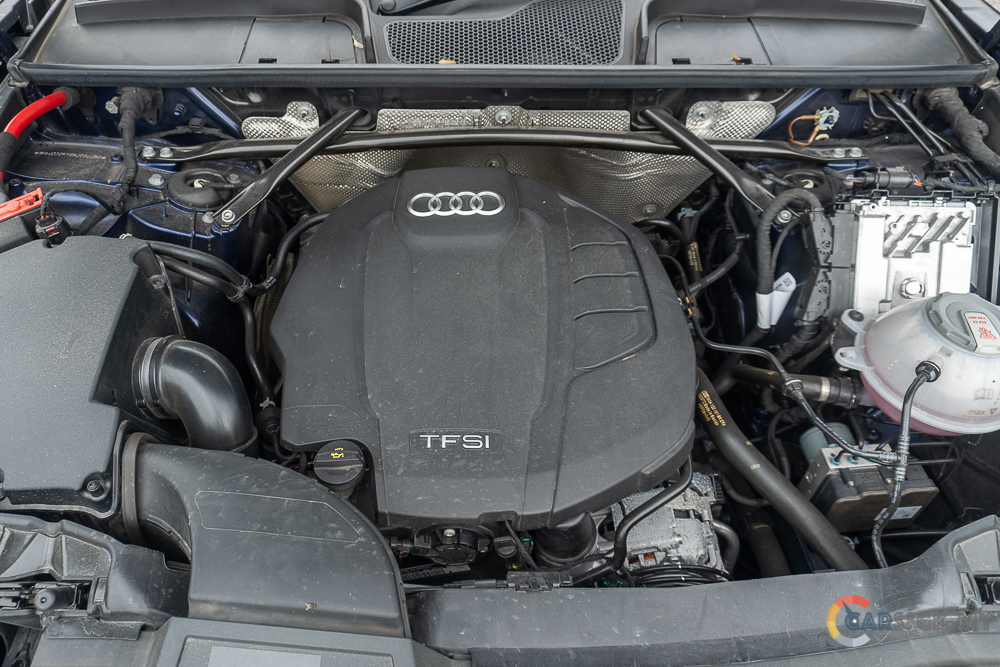
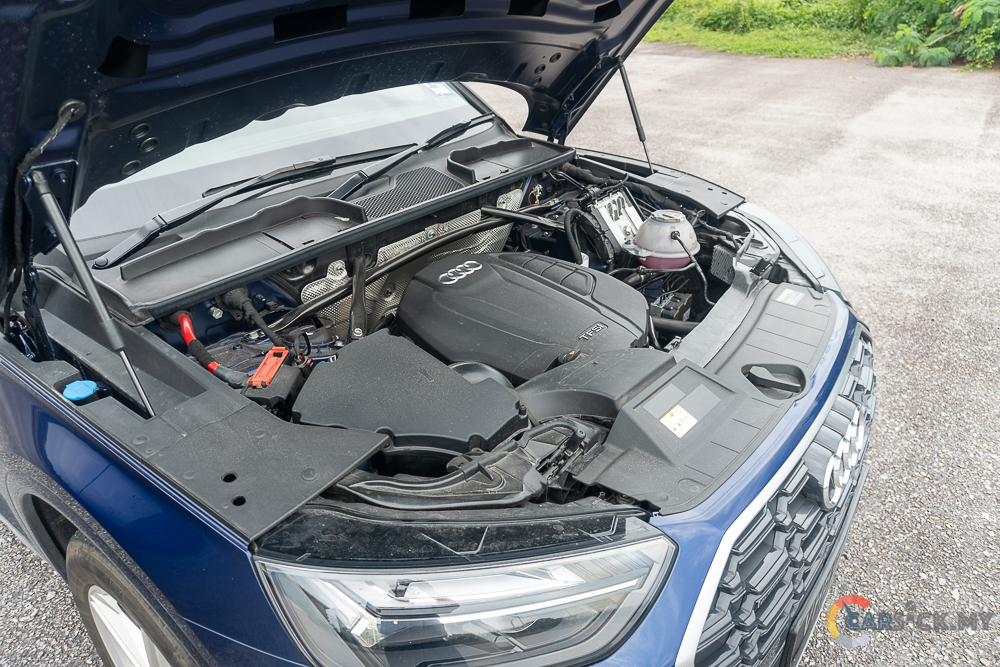
With this powertrain, the engine boasts ample power, enabling the vehicle to achieve high speeds with relative ease. Despite this, the engine operates very quietly, to the extent that it is virtually inaudible when idling. Even under heavy acceleration, the engine noise is barely perceptible within the cabin. Furthermore, when combined with the seamless dual clutch transmission, gear changes are imperceptible to the driver. During my time with the car over the holiday period, I was only able to achieve a fuel economy figure of around 9.0L/100km due to heavy traffic conditions. 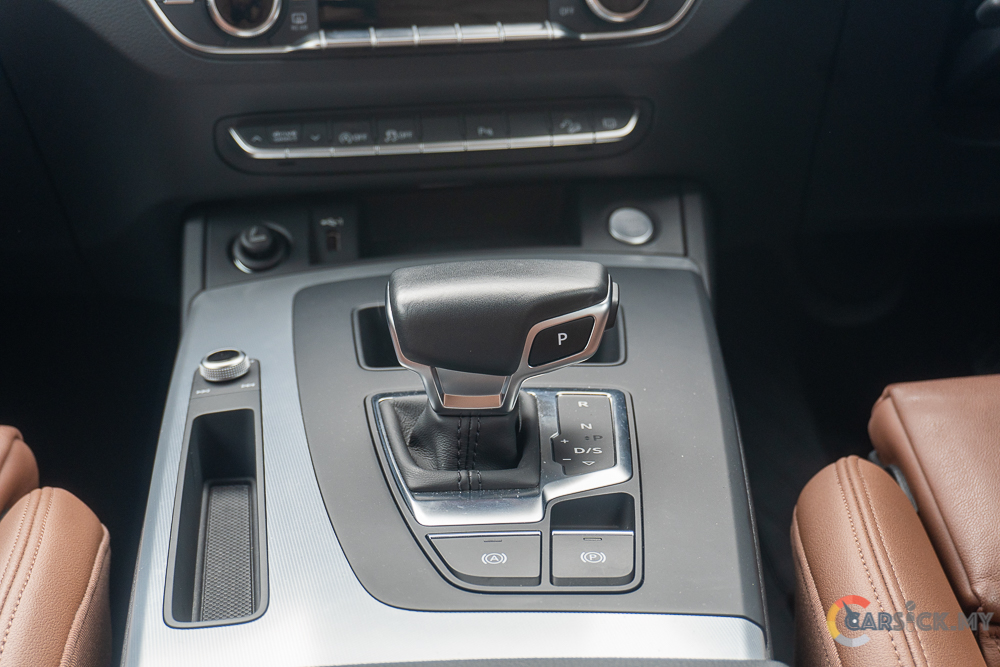
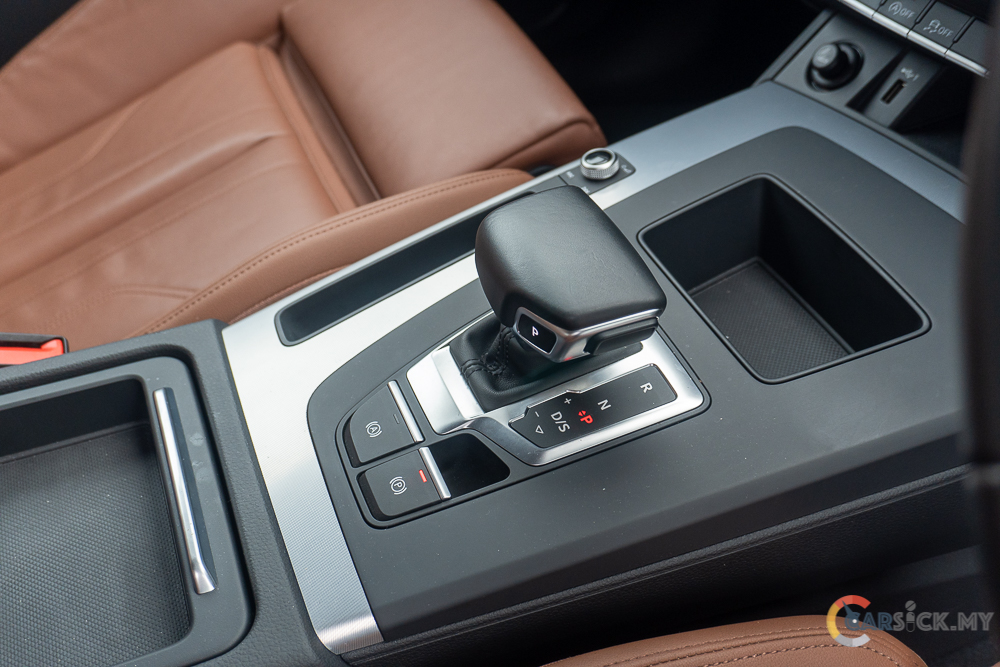
As the speed increases, the Q5’s steering wheel feels lighter at first but gradually becomes more responsive. While it offers precision, the driver may feel disconnected from the vehicle’s actions as feedback is lacking. The Q5 also boasts adaptive suspension, which remains comfortable even in dynamic mode, but body roll is present and serves as a reminder that it is an SUV. Nevertheless, the all-wheel drive provides ample grip, giving the Q5 a planted feel when navigating corners. 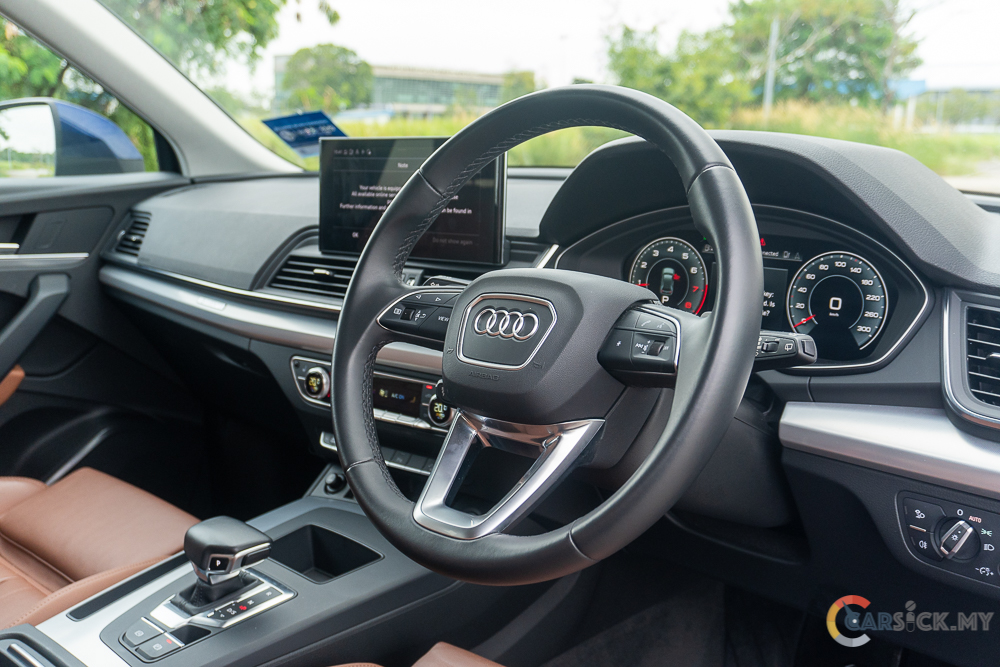
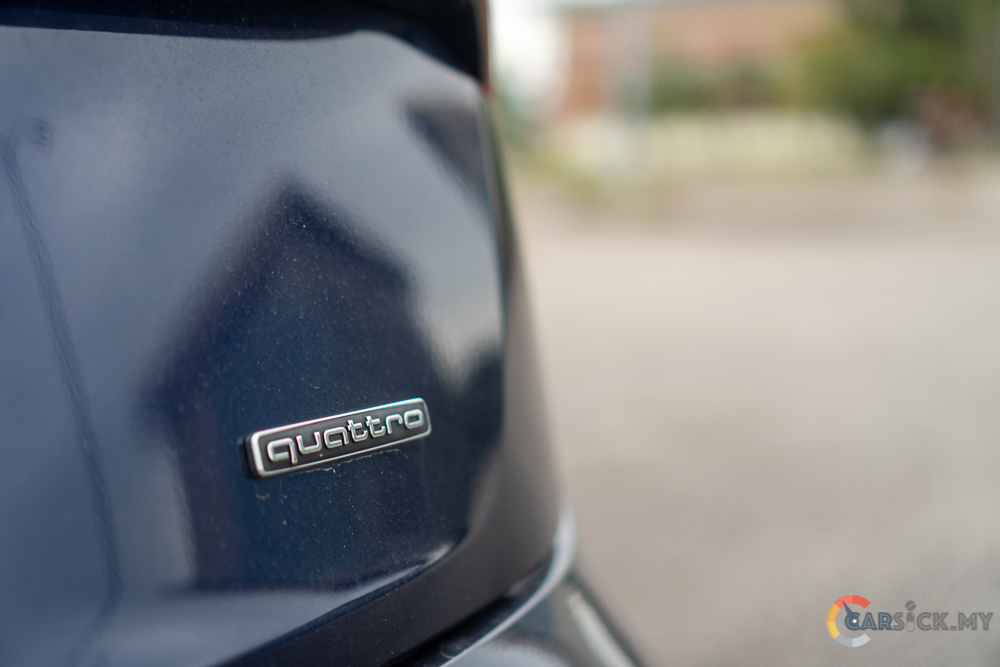
The stopping power of the brakes is satisfactory, but the feel of the brake pedal did not meet my preference. The brake pedal is relatively soft, despite providing the required stopping power. Nevertheless, the brakes remain simple to adjust. As for safety and driver assistance features, the Q5, much like the Q3, lacks a significant number of such systems. However, Audi’s website indicates that the retail unit includes a comprehensive set of safety and driver assistance features, such as lane-keeping assistance and six airbags.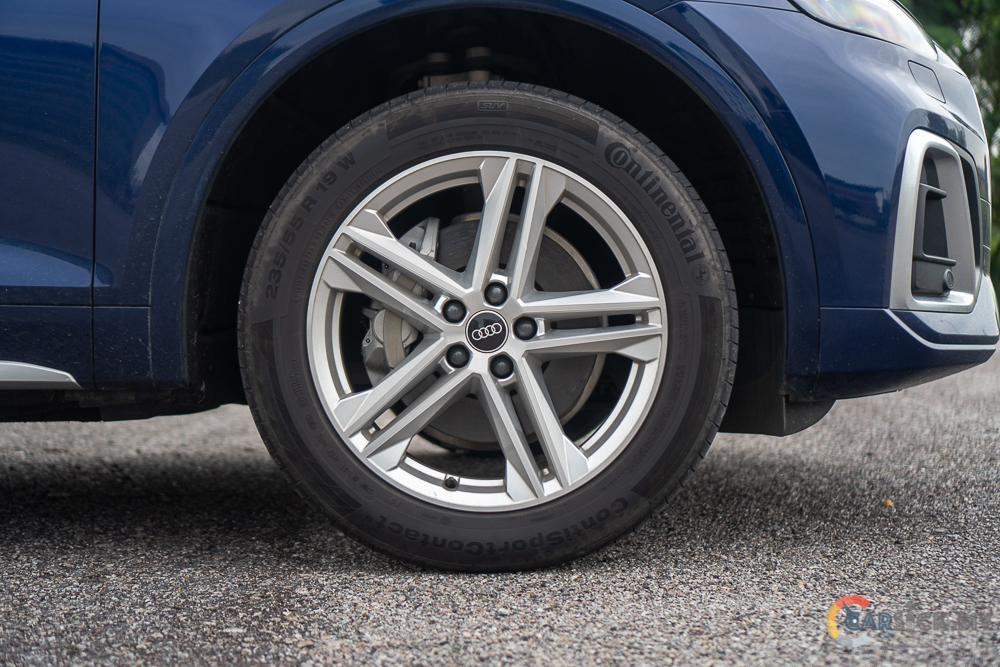
With the asking price of RM 376,996 for the Audi Q5, I feel that this price is on the higher side compared to its competitors. Although it matches the GLC and X3 in practicality, the cost of the Q5 puts it at a disadvantage. Despite its smaller size, the Q5 is just as functional as its rivals. However, assembling it locally through CKD, as with the Q3, could enhance its competitiveness in the Malaysian market.
Check out full photo album here. 